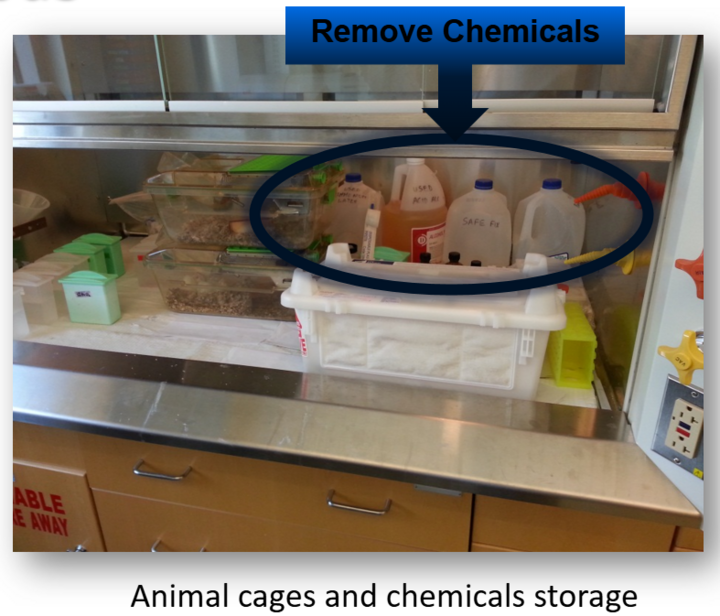The second exception is for a fume hood that is being used as a continuous work station. An example is shown in Exhibit A. This is a typical set up for staining histology slides. Since this is used as a continuous workstation, storing the solutions to do the cell staining is allowed as long as they don’t store unrelated chemicals in the hood.

This is in contrast to Exhibit B.

The chemicals in hood shown in Exhibit B should be removed. You should ask about the animal cages and how long they are stored in the fume hood. Generally, this should be for less than 24 hours and for a procedure that is about to be conducted (exception two).
The third exception to chemical storage in the fume hood is for chemicals that are particularly noxious (smelly) or lachrymators (tear-producing) from which vapors cannot be contained by lids alone.
Citing this checklist item really comes down to auditor judgment. Sometimes it will be obvious that this needs to be cited because there are a dozen bottles of various chemical stored in the fume hood. That type of situation is also about chemical incompatibility. Other times it won’t be so obvious, and that is where your experience as an auditor will come in to play. If you are unsure about whether to cite this, ask the lab staff what is going on in the hood and what the hood used for. Sometimes the hoods are not working hoods, rather are designated for storage. Be sure to describe lab staff in your notes and take a picture, then consult with a Senior Specialist when you get back to the office.